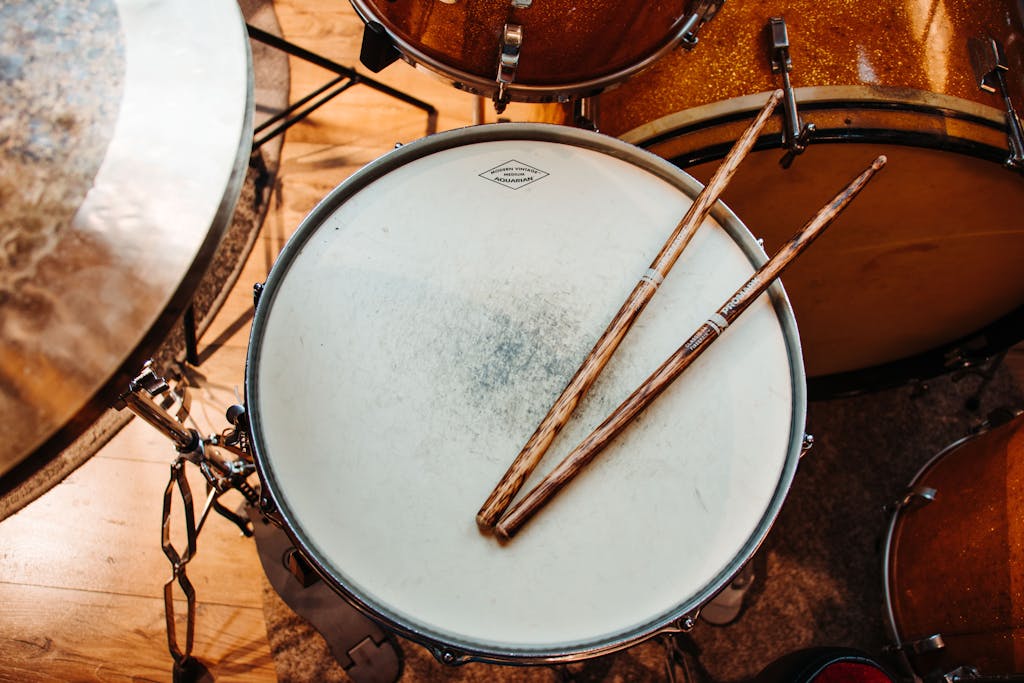Music education is a transformative journey for students, offering a unique blend of creativity, discipline, and teamwork. In the world of school bands, the instruments become an extension of the musicians themselves, requiring care and occasional maintenance to ensure optimal performance. Understanding basic repairs not only empowers students but also contributes to the longevity and resilience of the instruments. In this comprehensive guide, we will explore fundamental repairs for various school band instruments, providing step-by-step instructions and insights into common issues that musicians may encounter.
Brass Instruments:

1. Trumpet:
Common Issues:
- Stuck valves
- Dented tubing
- Loose braces
Basic Repairs:
- Stuck Valves:
- Apply valve oil and gently tap the valve to encourage movement.
- If the valve remains stuck, seek assistance from a professional repair technician.
- Dented Tubing:
- Use a smooth, rounded object, like a wooden dowel or the handle of a plunger, to gently push out dents.
- For extensive damage, consult a professional technician.
- Loose Braces:
- Tighten loose braces with a small wrench.
- If a brace is severely damaged, consult a professional for repair or replacement.
2. Trombone:
Common Issues:
- Stuck slide
- Dented bell
- Loose tuning slide
Basic Repairs:
- Stuck Slide:
- Apply slide oil and gently work the slide back and forth.
- If the slide remains stuck, consult a professional for a thorough cleaning.
- Dented Bell:
- Use a mallet with a soft, padded head to gently tap out small dents.
- For major dents, seek assistance from a professional technician.
- Loose Tuning Slide:
- Tighten loose tuning slides with a small wrench.
- If the slide is hard to move or damaged, consult a professional technician.
3. French Horn:
Common Issues:
- Stuck rotary valves
- Dented leadpipe
- Loose linkage
Basic Repairs:
- Stuck Rotary Valves:
- Apply rotor oil and work the valves gently.
- If the valves remain stuck, consult a professional for a thorough cleaning.
- Dented Leadpipe:
- Use a snake brush to carefully push out minor dents.
- Seek professional assistance for significant damage.
- Loose Linkage:
- Tighten loose linkage with a small wrench.
- If the linkage is severely damaged, consult a professional technician.
4. Baritone/Euphonium:
Common Issues:
- Stuck valves
- Dented tubing
- Loose valve caps
Basic Repairs:
- Stuck Valves:
- Apply valve oil and gently tap the valve to encourage movement.
- If the valve remains stuck, consult a professional technician.
- Dented Tubing:
- Use a smooth, rounded object to gently push out dents.
- Seek professional assistance for extensive damage.
- Loose Valve Caps:
- Tighten loose valve caps with a small wrench.
- If the caps are damaged or threads are stripped, consult a professional technician.
5. Tuba:
Common Issues:
- Stuck valves
- Dented tubing
- Loose braces
Basic Repairs:
- Stuck Valves:
- Apply valve oil and gently tap the valve to encourage movement.
- Consult a professional technician if the valve remains stuck.
- Dented Tubing:
- Use a smooth, rounded object to gently push out minor dents.
- Seek professional assistance for major damage.
- Loose Braces:
- Tighten loose braces with a small wrench.
- Consult a professional for severely damaged braces.
Woodwind Instruments:

1. Flute:
Common Issues:
- Stuck keys
- Misaligned pads
- Loose tenons
Basic Repairs:
- Stuck Keys:
- Apply key oil and gently work the stuck keys.
- Consult a professional for persistent issues.
- Misaligned Pads:
- Use a thin piece of cardboard to gently adjust misaligned pads.
- Seek professional assistance for major adjustments.
- Loose Tenons:
- Tighten loose tenons with a small wrench.
- Consult a professional for damaged or stripped tenons.
2. Clarinet:
Common Issues:
- Sticky keys
- Leaking pads
- Loose rings
Basic Repairs:
- Sticky Keys:
- Apply key oil and work the sticky keys gently.
- Consult a professional for persistent issues.
- Leaking Pads:
- Use a dollar bill to check for leaks and adjust pads as needed.
- Seek professional assistance for major adjustments.
- Loose Rings:
- Tighten loose rings with a small wrench.
- Consult a professional for damaged or stripped rings.
3. Saxophone:
Common Issues:
- Sticking keys
- Leaking pads
- Loose neck screw
Basic Repairs:
- Sticking Keys:
- Apply key oil and work the sticking keys gently.
- Consult a professional for persistent issues.
- Leaking Pads:
- Use a dollar bill to check for leaks and adjust pads as needed.
- Seek professional assistance for major adjustments.
- Loose Neck Screw:
- Tighten the neck screw with a small screwdriver.
- Consult a professional for damaged or stripped screws.
4. Oboe:
Common Issues:
- Sticky keys
- Leaking pads
- Cracked reed
Basic Repairs:
- Sticky Keys:
- Apply key oil and work the sticky keys gently.
- Consult a professional for persistent issues.
- Leaking Pads:
- Use a dollar bill to check for leaks and adjust pads as needed.
- Seek professional assistance for major adjustments.
- Cracked Reed:
- Trim the cracked portion of the reed with a sharp knife.
- Consult a professional for extensive reed damage.
5. Bassoon:
Common Issues:
- Sticky keys
- Leaking pads
- Loose tenons
Basic Repairs:
- Sticky Keys:
- Apply key oil and work the sticky keys gently.
- Consult a professional for persistent issues.
- Leaking Pads:
- Use a dollar bill to check for leaks and adjust pads as needed.
- Seek professional assistance for major adjustments.
- Loose Tenons:
- Tighten loose tenons with a small wrench.
- Consult a professional for damaged or stripped tenons.
Percussion Instruments:

1. Snare Drum:
Common Issues:
- Worn drumhead
- Loose tension rods
- Snare wire issues
Basic Repairs:
- Worn Drumhead:
- Replace the worn drumhead with a new one.
- Adjust tension evenly across the drumhead.
- Loose Tension Rods:
- Tighten loose tension rods with a drum key.
- Replace damaged tension rods as needed.
- Snare Wire Issues:
- Check for loose or damaged snare wires and replace if necessary.
- Adjust snare tension to achieve the desired sound.
2. Bass Drum:
Common Issues:
- Worn drumhead
- Loose tension rods
- Muffled sound
Basic Repairs:
- Worn Drumhead:
- Replace the worn drumhead with a new one.
- Adjust tension evenly across the drumhead.
- Loose Tension Rods:
- Tighten loose tension rods with a drum key.
- Replace damaged tension rods as needed.
- Muffled Sound:
- Check for obstructions inside the drum.
- Adjust the dampening system to control resonance.
3. Timpani:
Common Issues:
- Out-of-tune heads
- Loose tension rods
- Damaged heads
Basic Repairs:
- Out-of-Tune Heads:
- Use a timpani key to tune each drumhead.
- Adjust tension evenly to achieve the desired pitch.
- Loose Tension Rods:
- Tighten loose tension rods with a timpani key.
- Replace damaged tension rods as needed.
- Damaged Heads:
- Replace damaged drumheads with new ones.
- Follow manufacturer guidelines for head replacement.
4. Cymbals:
Common Issues:
- Cracks or dents
- Warped edges
- Discoloration
Basic Repairs:
- Cracks or Dents:
- Retire severely cracked cymbals.
- Smooth out minor dents with a soft mallet.
- Warped Edges:
- Flatten warped edges using a rubber mallet.
- Consult a professional for extensive warping.
- Discoloration:
- Polish cymbals with a specialized cleaner.
- Avoid abrasive materials to prevent further damage.
5. Xylophone/Marimba:
Common Issues:
- Broken or cracked bars
- Loose resonators
- Mallet damage
Basic Repairs:
- Broken or Cracked Bars:
- Replace damaged bars with new ones.
- Follow manufacturer guidelines for bar replacement.
- Loose Resonators:
- Tighten loose resonators with a screwdriver.
- Replace damaged resonators as needed.
- Mallet Damage:
- Replace damaged mallets with new ones.
- Choose mallets appropriate for the instrument’s bars.
String Instruments:

1. Violin:
Common Issues:
- Broken strings
- Peg slippage
- Bridge misalignment
Basic Repairs:
- Broken Strings:
- Replace broken strings with new ones.
- Follow proper stringing techniques.
- Peg Slippage:
- Apply peg compound to prevent slippage.
- Consult a professional for persistent peg issues.
- Bridge Misalignment:
- Adjust the bridge to ensure proper alignment.
- Consult a professional for extensive bridge adjustments.
2. Viola:
Common Issues:
- Broken strings
- Peg slippage
- Soundpost adjustment
Basic Repairs:
- Broken Strings:
- Replace broken strings with new ones.
- Follow proper stringing techniques.
- Peg Slippage:
- Apply peg compound to prevent slippage.
- Consult a professional for persistent peg issues.
- Soundpost Adjustment:
- Consult a professional for soundpost adjustments.
- Avoid adjusting the soundpost without proper guidance.
3. Cello:
Common Issues:
- Broken strings
- Endpin issues
- Bow hair replacement
Basic Repairs:
- Broken Strings:
- Replace broken strings with new ones.
- Follow proper stringing techniques.
- Endpin Issues:
- Check for stability and replace a damaged endpin.
- Consult a professional for complex endpin repairs.
- Bow Hair Replacement:
- Consult a professional for bow rehairing.
- Avoid attempting bow repairs without proper guidance.
4. Double Bass:
Common Issues:
- Broken strings
- Soundpost adjustment
- Bridge misalignment
Basic Repairs:
- Broken Strings:
- Replace broken strings with new ones.
- Follow proper stringing techniques.
- Soundpost Adjustment:
- Consult a professional for soundpost adjustments.
- Avoid adjusting the soundpost without proper guidance.
- Bridge Misalignment:
- Adjust the bridge to ensure proper alignment.
- Consult a professional for extensive bridge adjustments.
General Supplies for All Instruments:

1. Music Stand:
Common Issues:
- Loose parts
- Bent stand
Basic Repairs:
- Loose Parts:
- Tighten screws and bolts with a screwdriver or wrench.
- Replace damaged parts with manufacturer-approved replacements.
- Bent Stand:
- Straighten minor bends using a rubber mallet.
- Replace severely bent parts with new ones.
2. Tuner/Metronome:
Common Issues:
- Battery replacement
- Calibration issues
Basic Repairs:
- Battery Replacement:
- Follow manufacturer guidelines for battery replacement.
- Keep spare batteries on hand for timely replacements.
- Calibration Issues:
- Consult the user manual for calibration instructions.
- Seek professional assistance if calibration issues persist.
3. Instrument Stand:
Common Issues:
- Loose parts
- Corrosion
Basic Repairs:
- Loose Parts:
- Tighten screws and bolts with a screwdriver or wrench.
- Replace damaged parts with manufacturer-approved replacements.
- Corrosion:
- Clean corroded parts with a specialized cleaner.
- Apply a protective coating to prevent future corrosion.
4. Cleaning Supplies:
Common Issues:
- Lack of cleaning
- Discoloration
Basic Repairs:
- Lack of Cleaning:
- Clean instruments regularly with appropriate cleaning supplies.
- Follow manufacturer guidelines for instrument maintenance.
- Discoloration:
- Polish instruments with a specialized cleaner.
- Avoid abrasive materials to prevent further damage.
In conclusion, understanding basic repairs for school band instruments empowers musicians to take an active role in maintaining their instruments. While some repairs can be handled by the musicians themselves, it’s crucial to recognize the limitations and seek professional assistance for more complex issues. By fostering a culture of instrument care and maintenance, schools and educators contribute to the longevity and optimal performance of the instruments, creating a harmonious environment for musical exploration and growth.
More About Our Vocal Coaches
We understand that transitioning is often difficult and undeniably stressful for many people. While Dysphoria affects everyone differently, having an affirming voice that feels right for you can be a major factor in managing dysphoria.
Our vocal coaches help you find your voice by:

Dependable
⸺ & ⸺
Diligent
Having an advanced contact and booking platform to be sure that Your Lessons Now is always there for you, and our admin staff will always be here to help.

Helpful
⸺ & ⸺
Human
Providing a human touch to your scheduling and inquiries, our vocal coaches and also our admin team will assist you every step of the way.

Loud
⸺ & ⸺
Proud
Understanding the importance of providing a judgment-free and empathetic and caring environment, since many of us are LGBTQIA+ ourselves.

Secure
⸺ & ⸺
Respected
Our vocal coaches have extensive training, experience, degrees, and awards to further ensure the best learning environment for our students.